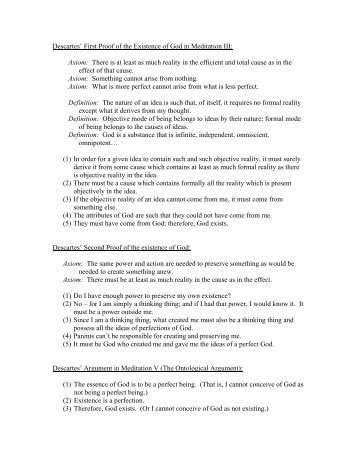

Most of Descartes' other works were written in Latin. The text was written and published in French rather than Latin, the latter being the language in which most philosophical and scientific texts were written and published at that time. La Géométrie contains Descartes's initial concepts that later developed into the Cartesian coordinate system. The book was intended as an introduction to three works: Dioptrique, Météores and Géométrie. Later, it was translated into Latin and published in 1656 in Amsterdam. The book was originally published in Leiden, in the Netherlands.


While addressing some of his predecessors and contemporaries, Descartes modified their approach to account for a truth he found to be incontrovertible he started his line of reasoning by doubting everything, so as to assess the world from a fresh perspective, clear of any preconceived notions. In this work, Descartes tackles the problem of skepticism, which had previously been studied by other philosophers. A similar argument, without this precise wording, is found in Meditations on First Philosophy (1641), and a Latin version of the same statement Cogito, ergo sum is found in Principles of Philosophy (1644).ĭiscourse on the Method is one of the most influential works in the history of modern philosophy, and important to the development of natural sciences. It is best known as the source of the famous quotation "Je pense, donc je suis" (" I think, therefore I am", or "I am thinking, therefore I exist"), which occurs in Part IV of the work. Discourse on the Method of Rightly Conducting One's Reason and of Seeking Truth in the Sciences ( French: Discours de la Méthode Pour bien conduire sa raison, et chercher la vérité dans les sciences) is a philosophical and autobiographical treatise published by René Descartes in 1637.


 0 kommentar(er)
0 kommentar(er)
